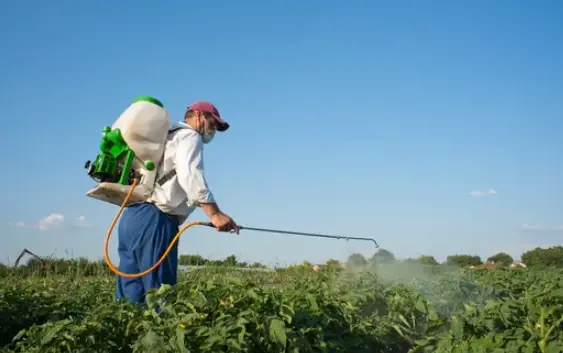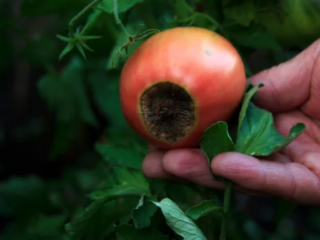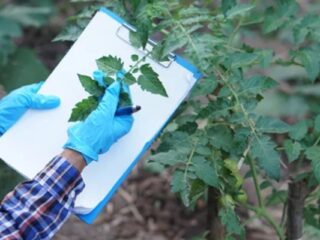Tomatoes are a mainstay in many home gardens and a necessary component in a variety of delectable recipes.
Tobacco black spot, a fungus that can seriously harm plant health and lower harvests, is one issue that tomato growers frequently deal with.
We will examine the root causes, visible symptoms, and various chemical treatments for tomato black spot in this blog post.
You can make sure your tomato plants thrive and yield a bumper crop by being aware of these cures and how to use them properly.
Tomato Black Spot
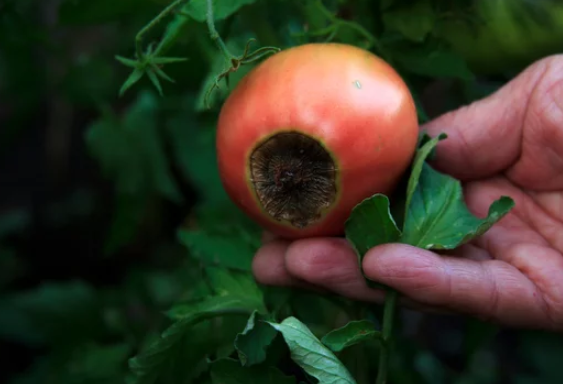
Tomato Black Spot
Tomato black spot, also known as Alternaria leaf spot, is caused by the fungi Alternaria alternata or Alternaria solani.
These fungi thrive in warm and humid conditions, making them a significant threat to tomato plants, especially during the growing season.
The disease manifests as dark spots on leaves, stems, and fruits, often surrounded by a yellow halo. If left unchecked, the spots can enlarge, causing leaves to yellow and wilt, and fruits to rot.
Chemical Solutions for Tomato Black Spot
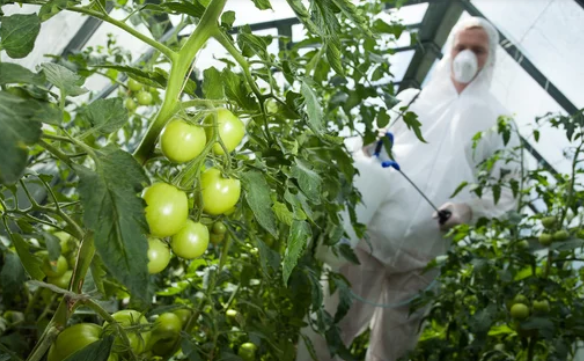
Chemical remedies play a vital role in managing tomato black spot, providing effective control and prevention. Fungicides are the primary chemical option for combating this fungal disease.
Several fungicides are available for controlling Alternaria fungi, including copper-based fungicides and synthetic fungicides containing active ingredients like chlorothalonil or mancozeb.
These fungicides work by inhibiting the growth and spread of the pathogens on the plant’s surfaces.
It’s important to note that different fungicides have varying modes of action and target different stages of the disease.
Some fungicides have preventive action, creating a protective barrier on the plant surface to prevent fungal spore germination.
Others have curative action, meaning they can halt the progression of the disease after infection has occurred.
When choosing a fungicide, consider its mode of action and select one that aligns with the stage of the disease you are targeting.
Another category of fungicides known as systemic fungicides offers internal protection against fungal infections.
They are absorbed by the plant and move through its vascular system, providing ongoing defense.
Systemic fungicides can be particularly useful for managing tomato black spot, as they reach areas that spray applications may miss.
However, it is crucial to exercise caution when using chemical remedies. Carefully read and follow the product labels to ensure proper dosage and application timing.
Failure to adhere to these guidelines can lead to ineffective control or potential harm to the plants.
Application Techniques:
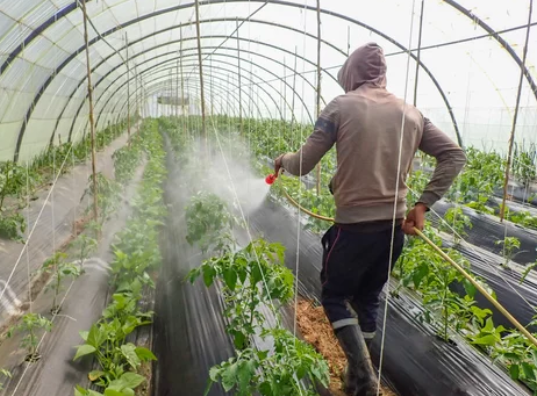
To maximize the effectiveness of chemical remedies for tomato black spot, proper application techniques are essential.
When using spray fungicides, it is crucial to achieve thorough coverage of both sides of the leaves, stems, and fruits.
Begin the application early, as soon as symptoms or signs of the disease appear, and continue on a regular schedule as directed by the product label.
Frequent applications may be necessary during periods of high humidity or rainfall to maintain control.
It’s worth noting that some fungicides require a certain waiting period between the last application and harvest to ensure that any residues have dissipated to safe levels.
This waiting period, known as the pre-harvest interval (PHI), varies depending on the fungicide used.
Always check the product label for the specific PHI and adhere to it to ensure the safety of the harvested tomatoes.
Integrated Pest Management (IPM)
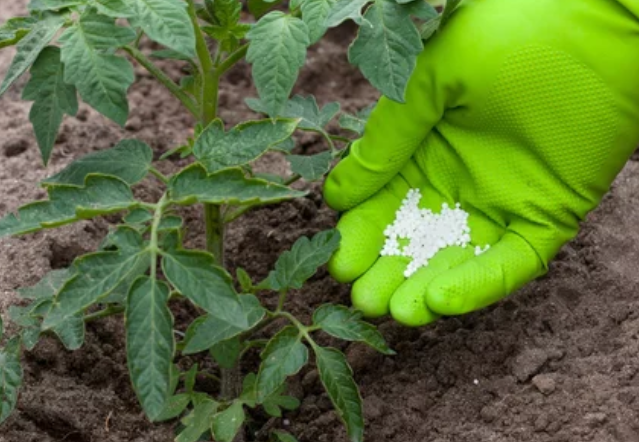
While chemical remedies are valuable tools for managing tomato black spot, they should be integrated into a comprehensive IPM approach.
IPM focuses on combining various strategies to control pests and diseases, with an emphasis on prevention and minimal environmental impact.
Cultural practices play a crucial role in IPM. Implementing crop rotation can help break the disease cycle by planting tomatoes in a different location each year.
This practice reduces the chances of the pathogen surviving in the soil and infecting new plants.
Proper plant spacing provides good air circulation, reducing the likelihood of prolonged leaf wetness that favors fungal growth.
Also, practicing good sanitation, such as removing and disposing of infected plant debris, helps minimize the risk of disease development.
In recent years, biological controls have gained attention as sustainable alternatives to synthetic chemicals. Biofungicides, derived from naturally occurring microorganisms or their byproducts, can suppress fungal pathogens. Incorporating beneficial microorganisms into the soil can enhance plant health and improve disease resistance. Some biofungicides contain beneficial bacteria or fungi that compete with the pathogenic fungi for nutrients and space, reducing their ability to cause disease.
Monitoring and Prevention
Regular monitoring of tomato plants is essential for early detection and prevention of tomato black spot.
Inspect plants for any signs of disease, including dark spots on leaves, stem lesions, or fruit rot. Promptly remove and destroy any infected plant parts to prevent the disease from spreading further.
By identifying and addressing the problem early on, you can minimize the need for excessive chemical interventions.
Preventing the disease from occurring in the first place is crucial.
Some preventative measures include selecting disease-resistant tomato varieties, ensuring proper nutrition and irrigation, and avoiding over-crowding of plants.
Providing adequate airflow and reducing leaf wetness through proper watering techniques can help create an environment less conducive to fungal growth.
Safety and Environmental Considerations
While chemical remedies are effective, it is crucial to handle them safely and responsibly.
When applying fungicides, use appropriate protective gear, such as gloves, goggles, and masks, to avoid direct contact or inhalation of the chemicals.
Always store fungicides and other chemicals out of reach of children and pets, following the instructions for safe storage and disposal.
Environmental impact is an important consideration when using chemical remedies.
Whenever possible, opt for environmentally friendly fungicides that have minimal adverse effects on beneficial organisms and the ecosystem.
Be sure to follow local regulations and guidelines regarding chemical usage in your area.
Conclusion
For tomato farmers, tomato black spot can be a bothersome disease, but it is successfully manageable with the right chemicals and application methods.
Knowing the causes, signs, and available chemical treatments will help you safeguard your tomato plants and ensure a healthy, abundant crop.
Keep in mind to incorporate chemical therapies into an all-encompassing IPM strategy that also includes cultural practices, biological controls, and monitoring methods.
These techniques will help you eliminate tomato black spots and have healthy tomato plants year after year.
- Penn State Extension: Tomato Diseases and Disorders – https://extension.psu.edu/tomato-diseases-and-disorders
- Clemson Cooperative Extension: Alternaria Leaf Spot – https://hgic.clemson.edu/factsheet/alternaria-leaf-spot/
- University of Maryland Extension: Alternaria Diseases of Tomato – https://extension.umd.edu/hgic/topics/alternaria-diseases-tomato

